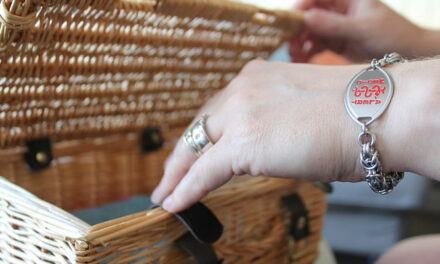In this article, we will be exploring the difference between diabetic shoes and regular shoes.
If you suffer from diabetes, you are probably aware of what diabetes can do to you if you didn’t take the disease seriously. What problems it can cause, and the issues’ it can create. Having high blood sugar can cause lots of problems, a lot of which people don’t even know about, and many people who suffer from diabetes have nerve-damage, created by the disease.
A lot of this nerve damage is in your foot, or in some cases feet, and this disease can create foot disease, which, if untreated or not treated correctly or adequately, can cause you to lose your feet, or maybe even your leg in severe cases.
One way to prevent this, or at least make it less likely, is to get a special type of shoes to wear. These shoes are called diabetic shoes, and they are made specifically for people with diabetes, with the thought of what diabetes can do to someone’s feet/how they can affect someone’s feet in mind.
These shoes will not only help prevent your from eventually losing your foot, but it will also help you manage any symptoms you have that relate to your feet.
So, let’s talk a little bit more about these shoes, and what exactly they are, and what exactly they do.
Why Should You Stop Wearing Regular Shoes If You Have Diabetes?
There are a few reasons you shouldn’t wear regular shoes if you have diabetes, but the most important reason, and the most common problem, has to do with the way the shoes are fitted.
When you wear loose shoes, your feet often slide around inside of them. This can create blisters and calluses, which for a typical person can hurt and be uncomfortable, but it can be dealt with easily. For people with diabetes, it can be dangerous. So, any chance to avoid getting them, you should take.
With diabetic shoes, they’re fitted in a way where blisters and calluses are not common. They fit well on your foot and are slightly tighter than regular shoes. This is to prevent your foot from sliding around in your shoe, which can prevent your foot from getting blisters and calluses, which are something you really want to avoid if you have diabetes, as they can cause even more problems with your feet.
If you already have problems with your feet due to diabetes, the blisters and calluses will just make those problems worse.
So if you have diabetes, regular shoes might not be for you, since they can cause something that can be very harmful to your feet, a lot more harmful than it already is on the foot of somebody without diabetes, on a regular foot. So, if you have diabetes, it’s smart to consider diabetic shoes for your feet, as opposed to regular shoes.
Now, given you know the fundamental difference between the two, let’s dig further into diabetic shoes. What really they are?

Tip: Here are the best diabetes shoes of the year.
What is a Diabetic Shoe?
A diabetic shoe is a shoe that is specifically made for people who have diabetes or are “diabetic”. These shoes are specifically tailored for people who have diabetes, more specifically for people who have issues’ or problems with their feet because of diabetes.
These shoes help manage any symptoms you have from diabetes, or any issues’ diabetes may have created or caused, especially with your feet.
The fit of your shoe also acts as a compression shoe, like a compression sock, but a shoe instead of a sock, which can help circulation, as well as help any damaged nerves you have, which is something diabetes can also do. It does both these things by pressing on the correct places and spots on your foot.
These shoes are designed to help those with diabetes, especially those who have issues’ problems with their feet due to diabetes, and they seem to have positive results. So, if you have diabetes or know somebody that has it, it might not hurt to at least look into these shoes and see what they can do for you.
But, before you look into them on your own, let’s talk more about them, and maybe I’ll answer some of the questions you might have.
Tip: Did you know the difference between diabetes socks and compression socks? We covered that earlier. Remember, those socks are very different from heel and elbow protectors.
What Type of Shoes are Best for Diabetics?
Well, stating the obvious, any shoe that is labeled as a diabetic shoe is a shoe that is ‘good’ for diabetics and the issues’ that diabetes can cause in your feet. But, some specific shoes can help diabetes (in ‘specialized manner’), and help manage the symptoms as well as prevent things from getting any worse re-guarding your feet and circulation.
Two shoes that mainly help people with diabetes and are technically diabetic shoes are both diabetes orthopedic and diabetes neuropathy shoes. Those two shoes are both recommended for diabetes patients and are both classified as diabetic shoes.
Each of these shoe types possesses certain unique features that are specific to diabetic shoes, and are special features that these, as well as most other diabetic shoes, need to possess in order to help with and manage diabetes symptoms. That’s why actually they are still classified as diabetic shoes.
So, let’s discuss those unique features of diabetes shoes now.
Special Features of Diabetic Shoes
These shoes have a few unique features that regular shoes do not have. Although there’s only a handful of special features, they’re essential special features, and the shoes wouldn’t work the way they’re supposed to without them. Therefore, they wouldn’t be diabetic shoes if they did not have these qualities and features that they possess.
- One feature, which I’ve already talked about, is the way they’re fitted, which can help circulation as well as keep your feet from sliding around inside of them, preventing blisters and calluses.
- Another one is the deep toe box these shoes have, preventing hammertoes as well as bunions.
Tip: Here are some tips about diabetic shoe fitting.

But to go more in-depth about what exactly the special features do and why they’re important, and discuss something we haven’t talked about yet, let’s talk about what exactly the unique features of this shoe do.
- Basically, these shoes reduce the risk of skin breakdown, and that’s how they help with the foot diseases that diabetes can cause and create.
Along with these special features, and everything we’ve discussed already, there are many other benefits and advantages of diabetic shoes.
Let’s go through and talk about some of those now.
Benefits and Advantages of Diabetic Shoes
There are quite a few benefits and advantages when it comes to diabetic shoes, a lot of which we’ve talked about already, and some may be obvious, but they are what makes the shoe a diabetic shoe, and what makes them so effective.
These benefits and advantages include the help it gives to your circulation, helping your blood circulate well through your body. It does this by acting as a compression shoe, creating compression around your feet, hitting all the correct spots to keep your circulation normal as your blood circulates your body.
If your circulation isn’t very good, and your blood isn’t circulating well through your body, your body can get very cold and slowly shut down. It can cause quite a few problems in the body, but with these shoes that help with circulation, many of those issues’ can be prevented, and with better circulation, you can keep your body warm and functioning. That is the biggest benefit and advantage to these types of shoes.
But, another one is the soft material the shoes are made out of. The material varies for every shoe and every company that makes them, but no matter what the material is, they’re all made with material that’s soft and comfortable. Material that feels good around your feet and is easy to walk in. It’s another reason they’re so great for people with feet problems.
Now that we’ve talked about the advantages of diabetic shoes, let’s talk about the opposite, the disadvantages.
Disadvantages of Diabetic Shoes
There are much more advantages than disadvantages when it comes to diabetic shoes, but that doesn’t mean there are no disadvantages.
Even though there really aren’t that many disadvantages, especially compared to how many advantages of diabetic shoes there are. Still, there is one disadvantage that stick out, and that most people would actually consider a weakness.
This is the price. These shoes are special, and so they’re up there in price. They can be 2 times the amount of regular shoes. These shoes are often between $100 and $200. But as most people will tell you, they’re worth every cent.
Knowing some people are unable to spend this kind of money and it is out of their price range, there are some you can find online for cheaper. However, keep in mind they might not be as high quality, and they might not have all the same special features of a diabetic shoe that costs more. They should get the job done though if you’re unable to afford the more expensive ones.
The other disadvantage is if you don’t find the right shoe for your specific problems, it may not help like it would if you found the perfect diabetic shoes for you.

Tip: This is the MediChannel’s Review of NanoSocks for Diabetes Neuropathy.
Differences Between Diabetic Shoes and Regular Shoes
Well, the biggest difference between diabetic shoes and regular shoes: diabetic shoes are mainly for people who have diabetes.
-
Diabetes shoes are designed for diabetics
Even more specifically, these are for people with diabetes to affect their feet. These shoes are designed for diabetics.
In contrast, regular shoes are designed from anyone and everyone, except people with special needs like this. They’re designed for the overall population, for people who don’t have any diseases or illnesses that pertain to their feet. It’s not explicitly designed with them in mind, but diabetic shoes are. So that is the main difference.
-
Compression diabetic shoes give
Although I’ve talked about all of this throughout this article, just as a reminder, other differences are the compression diabetic shoes give, which regular shoes are not designed to have unless you get a size too small, but if you do that, it’ll probably just be uncomfortable instead of a nice pressure around your foot.
-
The bigger toe box in diabetic shoes
Another difference is how big the toe box is. It’s bigger in diabetic shoes than regular shoes, so these shoes can prevent hammer toes and bunions. These shoes can do this with anybody. However, it was designed into the diabetic shoe (specifically for diabetics) as they are more dangerous for those with diabetes.
Now, I mentioned the wide toe box can help prevent hammertoes and bunions on anybody. Still, many people ask the question, can somebody without diabetes wear these shoes and avoid diabetes, the disease itself, not just the dangers that come along with its re-guarding feet.
Well, let’s discuss that now.
Tip: Here’s more about the Darco GentleStep Diabetic Shoe.
Can a Person Without Diabetes (Pre-diabetes) Wear Diabetes Shoes and Prevent Diabetes?
Does this question have a short, simple, straightforward answer? No, it doesn’t.
These shoes are for managing what you already have, not preventing what hasn’t started (i.e. diabetes), especially if you have no symptoms of diabetes or no other foot disease, whether it be from diabetes or something else.
Diabetes shoes cannot prevent diabetes, only help manage what you already have. The only preventing these shoes can do is they can prevent your foot disease or other problems with feet caused by diabetes (or other foot diseases and problems from other illnesses) from getting any worse. They can do that, but cannot prevent something that hasn’t started or begun.
So, if you’re not suffering from diabetes or any other foot problems, whether caused by an underlying illness or not, I wouldn’t purchase a pair of these. They may prevent hammertoes or bunions as they would on a diabetic person. Still, they will not prevent illness that causes extra foot disease or problems and issues’, especially diabetes itself. Keep that in mind, when looking into any type of diabetic shoe.

Tip: Knee Pillows can help to prevent pressure sores from your feet. We previously covered best knee pillows for the stomach, back and side sleepers.
Conclusion
In conclusion, if you have diabetes, or know someone who does, it might be a smart idea for you to look into purchasing a pair of diabetic shoes.
These shoes have shown great results, and like I explained earlier in the article. Diabetes can cause many issues’ with your feet especially if you wear the wrong shoes, from getting blisters and calluses which can be dangerous to someone with diabetes, to foot disease, to the poor circulation through your feet. These problems can be maintained and managed, as well as possibly prevented from getting any worse once they have started.
Quality diabetes shoes are very well-made and fulfill their purpose of helping those who suffer from and possibly struggle with diabetes. They work great, and they can potentially change a lot for the feet of people that have been damaged by diabetes.
I hope you find the right shoes for you or a loved one. You’re able to enjoy a little more with a little less worrying about what diabetes could possibly do to your feet, now knowing that the shoes you have on could help manage the symptoms or problems and issues’ that you might have, as well as possibly prevent them from getting worse.
Tip: Foot massage is highly recommended for a healthy foot. Here are the Best Foot Massagers for diabetics.






0 Comments